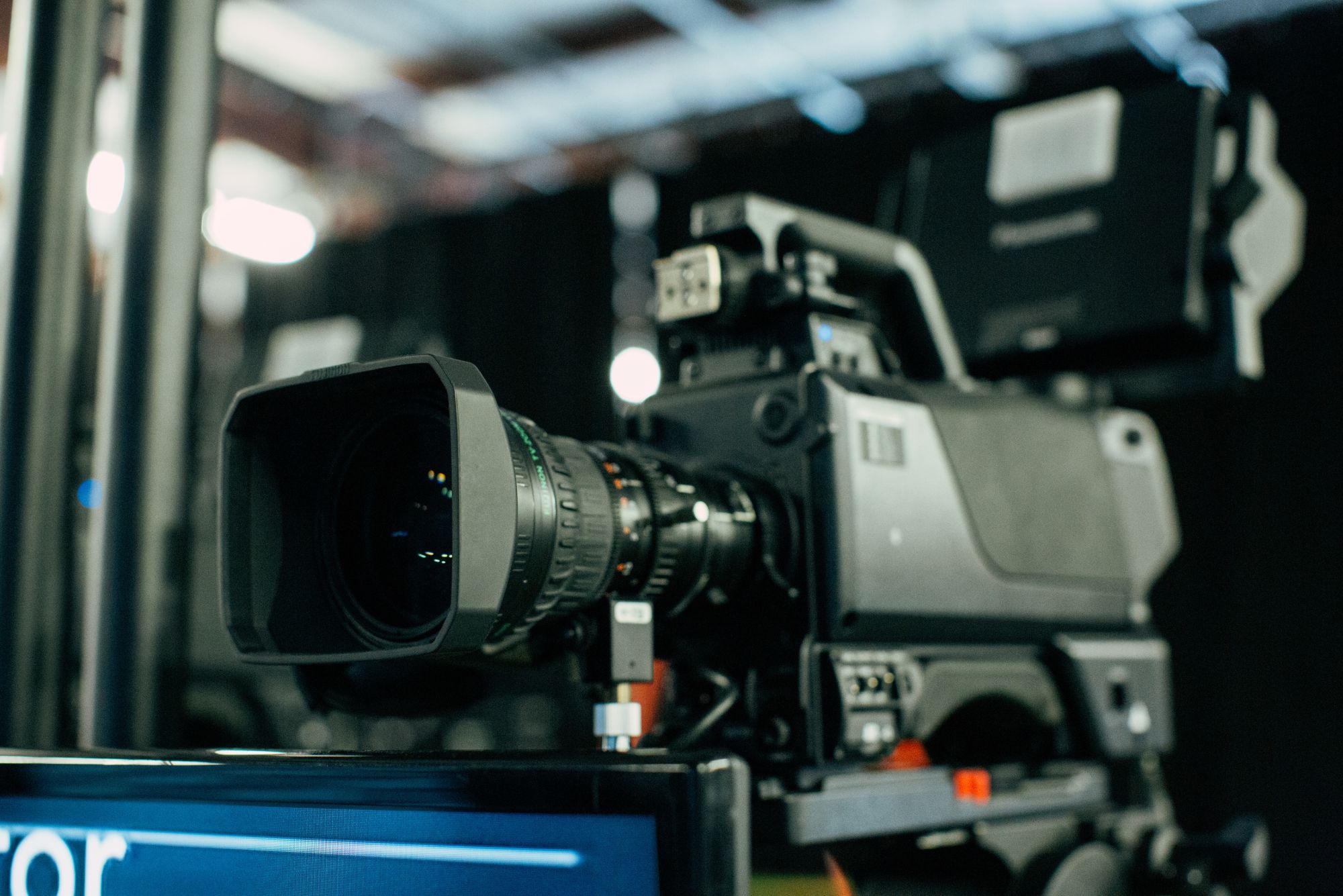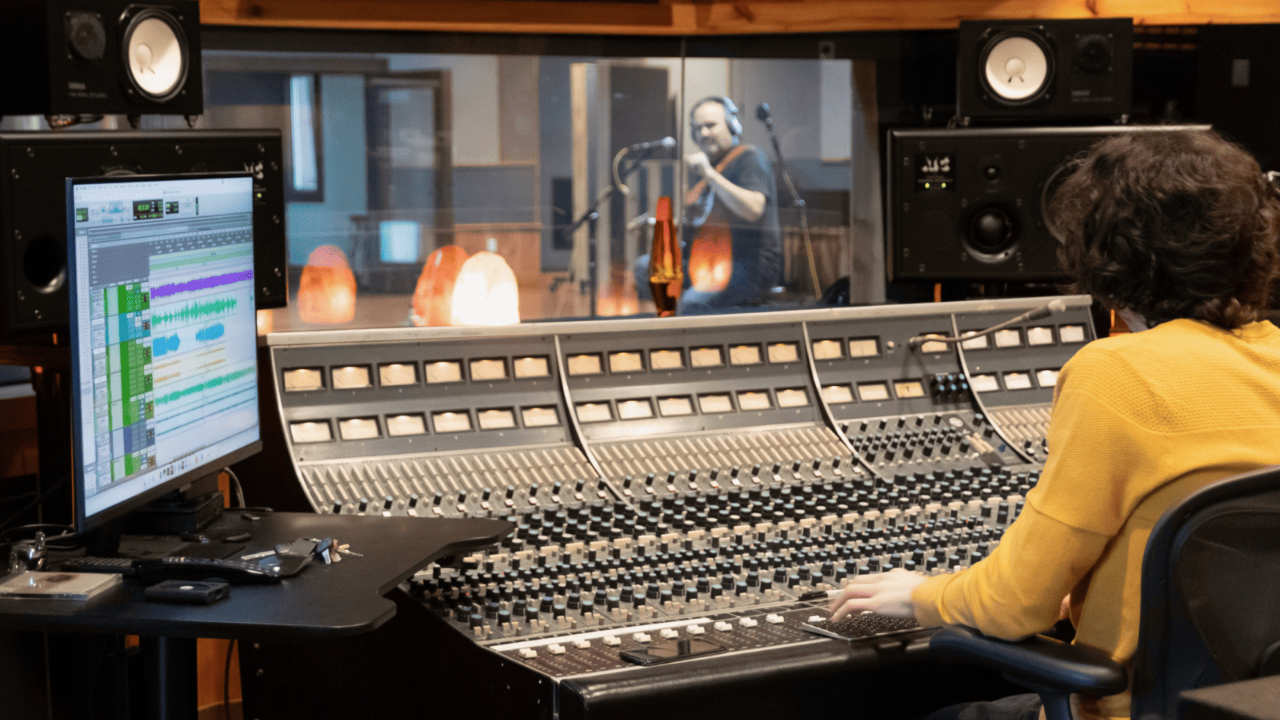Broadcast vs. Cinema Cameras: in the Church
Published on: Tuesday, July 12, 2022 - 7:00am

A few years ago, a new trend began impacting churches.
Traditionally, church media teams have used broadcast cameras to capture services for archiving, broadcasting, and streaming. But as the desire for more creative content rose, so too did the use of cinema cameras.
Cinema cameras lend themselves to a more specialized, distinctive production of creative videos shot ahead of time for playback during services or for posting to websites, social media, and other platforms.
As more churches integrate the use of cinema cameras into their media workflow, many of our clients are coming to us with this question: Should my church make the change?
Here’s what you need to know before jumping into the cinema camera trend.
What’s the Difference Between Cinema and Broadcast Cameras?
The most important difference between cinema cameras and broadcast cameras is the look and feel their videos bring to the congregation.
Broadcast cameras are built to capture the most realistic video possible for viewers. They behave almost like the human eye in terms of color, depth of field, and keeping multiple elements in focus at once. They also most commonly shoot in 60 frames per second, capturing sharp, vivid detail of everything in view.
Broadcast cameras produce videos that draw the viewer in, making them feel connected to what’s happening in the room.
Cinema cameras have traditionally been used for a different purpose. While onboard functionality and control of cinema cameras is very different from broadcast cameras, the primary distinction related to the end result is that cinema cameras use a different type of lens; they most often shoot at 24 frames per second to produce a softer, less realistic look. Their shallower depth of field keeps foreground subjects in focus, while allowing others to fade. The artistic use of this technology is vital in creating the stunning imagery we see in modern films.
Cinema cameras can create more unique, distinctive content than broadcast cameras, but without the same feeling of connection to the action.
If you watch NFL football, you’ll probably recognize the difference. The NFL now uses both broadcast and cinema cameras in the same game. Broadcast cameras are used for in-game plays on the field, the movement of the players, the fans in the background — all the action at once. Viewers can see every detail and almost feel like they’re in the stadium.
But then there’s a touchdown. Viewers don’t need to see the whole field anymore; they want to see the player’s celebration up close in the end zone, so production switches to a cinema camera at field level. You get a tight focus on the main image and see all the emotion on the player’s face, but the crowd in the background softens and goes out of focus. It’s reminiscent of portrait mode on your phone’s camera.
Why Are Churches Using Cinema Cameras?
As churches added more creative, pre-recorded content to their online presence and to their live and streaming services, many started finding new uses for the specialties of cinema cameras. While the cameras couldn’t replace broadcast cameras for certain uses, media teams found that blending the two technologies provided more options and opportunities for creativity.
How and When To Use Cinema Cameras
If you want to know whether you should invest in cinema cameras for your church, here are a few important principles to consider.

Know It’s Optional
Adding cinema cameras to your lineup is not like the move from standard definition to high definition. That change was inevitable and complete. But you don’t ever have to use cinema cameras if they don’t suit your church’s capabilities, environment, and congregation.
Cinema cameras aren’t a better technology coming in to replace old, defunct broadcast cameras. They’re an optional move intended for a different end result. Broadcast cameras are a modern and evolving technology too, and they’ll stick around to fulfill their particular purpose.
Ask Why
Adding cinema cameras may seem like a powerful wave that everyone must eventually bend to. But this is not a change to make just because others have. It has to fit your church and your mission.
Before diving in, it’s crucial that you ask why. Why do you want to adopt cinema cameras? Do you have a plan for their capabilities? Will they suit your congregation and enhance the content that your church is aiming to create?
The churches using cinema cameras are going for a more creative and specific feel for certain production elements. If that’s your church, then this might be a good investment for you.
But if your goal is to give remote participants the closest, most realistic feel of what’s happening in the room, then broadcast cameras are probably still the right tool to use.
Plan Your Resources
Churches successfully integrating cinema cameras have to focus their resources.
They have strategic goals aligned with their mission. Their strategy is built around a more artistic and unique type of content creation, which they support across the board to take it through to completion.
Many churches will use a completely separate, dedicated team to handle the stream feed compared to the in-room video feed. In some cases, there is a blending of camera elements that creates different experiences for the live congregation, the streaming participants, and the viewers watching it later in the week.
Using cinema cameras requires a complete strategic, stylistic, and creative approach that’s entirely distinct from just trying to be visible to people who can’t make it to church that weekend.
Which Is Right for You?
So many churches have adopted and/or integrated cinema cameras recently that camera manufacturers have taken notice. Several major brands are making it easier to live in both the broadcast and cinema camera worlds by building better frame rate switching capabilities into a single camera. As this progresses, it will provide improved flexibility for churches that see the value in both approaches.
CTS believes in intentional, mission-driven decisions. If you’re interested in cinema cameras, ask yourself why you need this change, understand where it will take you, and make sure it aligns with your mission and plan for the future.
Lastly, if you’re simply not sure if AVL upgrades are even necessary at your church, it helps to ask basic — yet insightful — questions to determine your church’s priorities and where you should invest your money. If you don’t know where to begin, check out our church AVL systems upgrade assessment.



